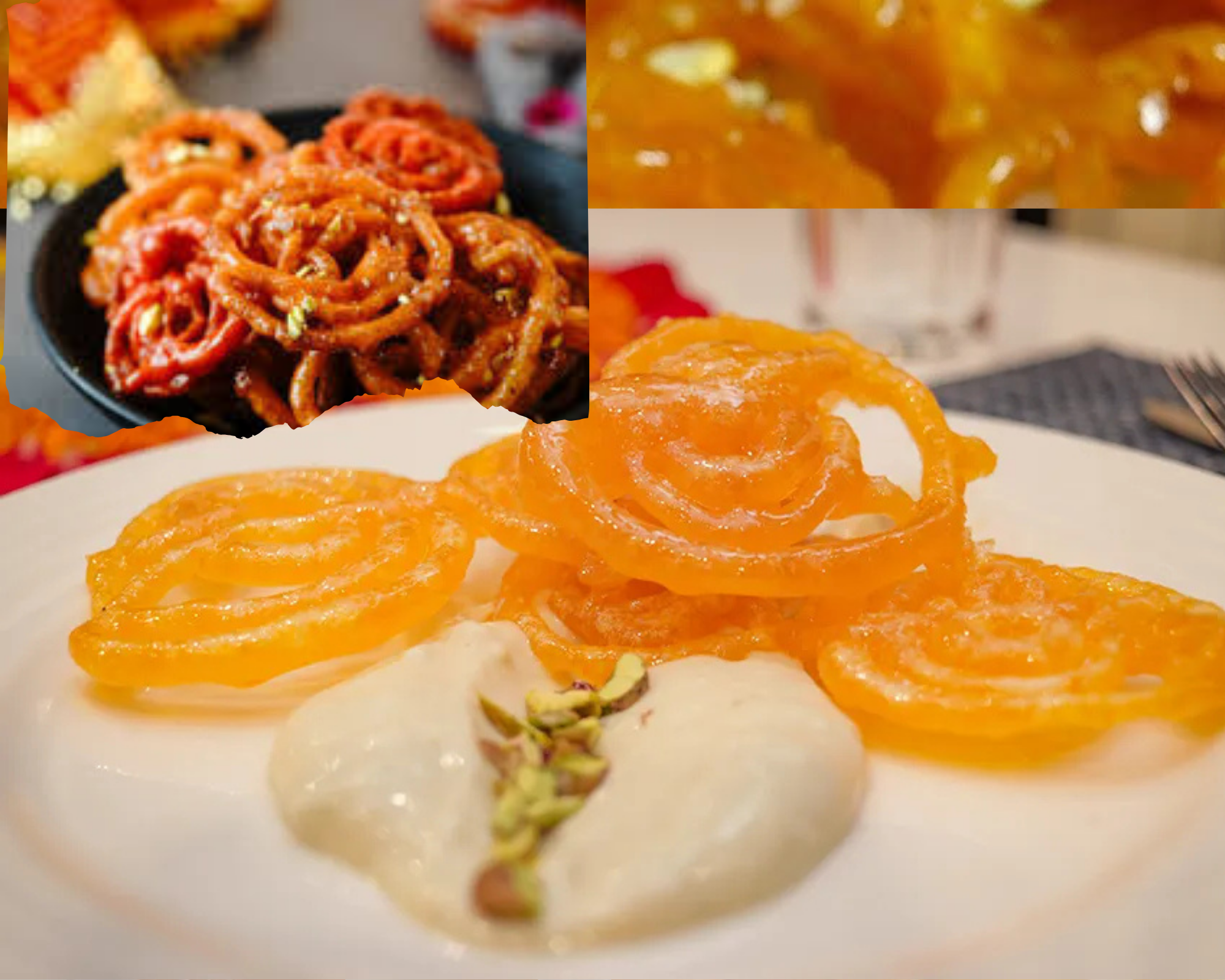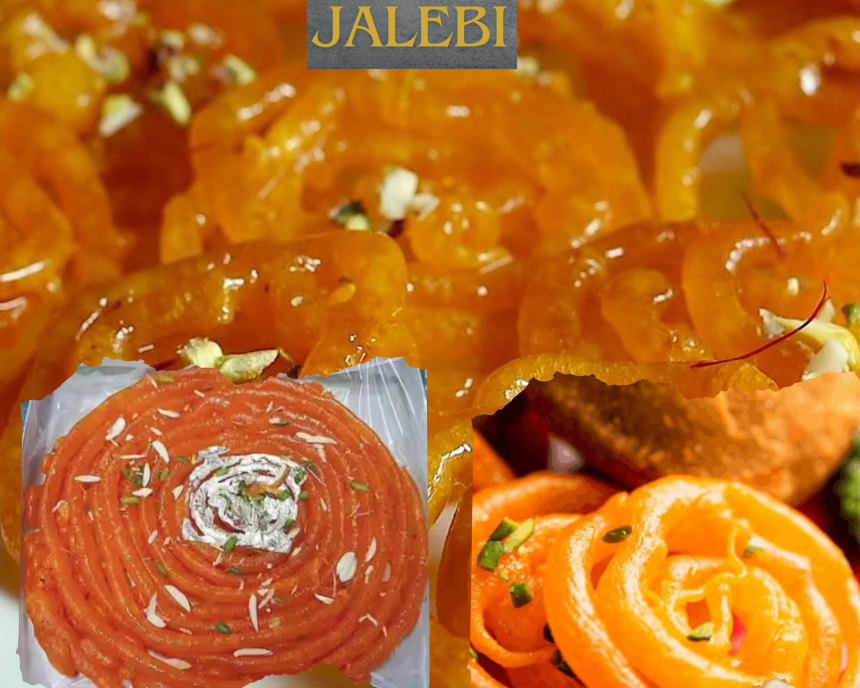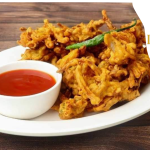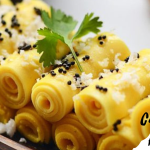When it comes to eating classic treats, the Enchantment of Jalebi reigns supreme. This spiral-shaped confection, coated in sugar syrup, is a staple of celebrations, roadside food stops, and families across South Asia and the past. But what makes jalebi so powerful? Let’s take a profound jump into the world of this sweet, fresh, and brilliant delight.
A Brief History of Jalebi
Did you know jalebi isn’t initially from India? Stunning, right? This sweet charm has its roots in the Center East, where it was known as “zalabiya” or “zulubia.” Dealers and intruders brought it to the Indian subcontinent, and local people gave it a turn to make the Enchantment of Jalebi we know and cherish nowadays. Over centuries, it has advanced into an notorious dessert delighted in worldwide.
The Basic Fixings Behind the Magic
What makes jalebi extraordinary is its effortlessness. All you require are:
Flour: Ordinarily all-purpose flour to shape the base batter.
Yogurt: For that slight tang and fermentation.
Sugar: The soul of the syrup.
Ghee or Oil: To broil it to brilliant perfection.
Optional Flavors: Saffron, rose water, or cardamom to include a imply of luxury.
These humble fixings come together to make something uncommon. It’s like turning sand into gold!
How Jalebi Gets Its Signature Shape
Ever pondered how those culminate spirals are shaped? It’s all almost strategy. The hitter is poured into hot oil utilizing a channeling pack, a crush bottle, or indeed a improvised cloth cone. With speedy, circular movements, the hitter changes into spirals that sizzle and puff up. It’s a mesmerizing handle to observe – nearly like a sweet dance.
The Craftsmanship of Dousing in Sugar Syrup
Frying is fair half the story. The fresh spirals are at that point dunked into warm sugar syrup flavored with saffron or cardamom. This step is pivotal since it’s where the Enchantment of Jalebi gets its signature sweetness and sticky surface. The key? The syrup has to be fair right – not as well thick, not as well thin.
Jalebi Over Cultures
It’s intriguing how jalebi has been grasped and adjusted over cultures:
India: Served hot with drain or rabri (thickened sweetened drain) amid celebrations like Diwali and Ramadan.
Pakistan: A favorite for Iftar amid Ramadan.
Middle East: Known as zalabiya, it’s delighted in as a Ramadan treat.
South Africa: Cherished as a nibble, frequently called “Koeksister Jalebi.”
Wherever it’s found, jalebi’s request remains universal.

The Idealize Pairings
If jalebi is the star, its backups are the supporting cast:
Rabri: The rich abundance of rabri complements jalebi’s sweetness.
Milk: Hot or cold, drain tempers the strongly sugary flavor.
Samosa: Yes, sweet and savory partners, this combo is a thing in India!
These pairings hoist the jalebi encounter to a entirety unused level.
Modern Takes on Jalebi
Innovative chefs and domestic cooks have reimagined jalebi in energizing ways:
Chocolate-Dipped Jalebi: For a combination dessert.
Jalebi Cheesecake: Classic cheesecake with jalebi spirals.
Miniature Jalebis: These bite-sized snacks are ideal for munching on the go.
These sophisticated twists illustrate how tradition and inventiveness may coexist.
Making Jalebi at Home.
Feeling inspired to cook jalebi at home? Here is a quick overview:
Prepare the Hitter. Combine flour, yogurt, and water. Allow it to ferment.
Make the syrup: Warm the sugar and water until it reaches a one-string consistency.
Fry the Spirals: Immerse the player in boiling oil, creating spirals.
Soak in Syrup: Immerse the browned spirals in sugar syrup.
It may take a few tries, but the satisfaction of making your own jalebi is well worth it.
Jalebi in Pop Culture
From Bollywood melodies to verse, the Enchantment of Jalebi holds a extraordinary put in pop culture. Who can disregard the catchy tune “Jalebi Bai” or the nostalgic lines of artists celebrating its sweetness? It’s more than a dessert; it’s a image of delight and celebration.
Healthier Alternatives
Let’s confront it – jalebi isn’t precisely slim down nourishment. But you can attempt more advantageous versions:
Baked Jalebi: Skip the searing and heat it instead.
Low-Sugar Syrup: Utilize normal sweeteners like nectar or stevia.
Whole Wheat Hitter: Swap refined flour for entirety wheat.
While it’s difficult to beat the unique, these options offer guilt-free indulgence.
The Appeal of New Jalebi
There’s nothing like gnawing into a new jalebi straight off the container. The crunch, the syrup overflowing out, the warmth – it’s an involvement that’s difficult to put into words. It’s no ponder that jalebi slows down are frequently encompassed by enthusiastic crowds.
Why We Adore Jalebi
Jalebi is more than fair a dessert; it’s a piece of history, a social symbol, and a source of consolation. Whether you’re celebrating a celebration, reveling in a midnight longing for, or thinking back almost childhood recollections, jalebi never falls flat to bring a smile.
Read More: A Marvelous Vacation in Bali: Dusks, Shorelines, and Romance
Conclusion
So, the following time you’re savoring the Enchantment of Jalebi, take a minute to appreciate its travel – from old Center Eastern kitchens to your plate. Its brilliant spirals remind us that now and then, the easiest things in life bring the most noteworthy bliss. Whether you’re a traditionalist or a fan of cutting edge turns, jalebi has a enchantment that’s difficult to stand up to.







